How Much Do Professional Cameras Cost
The best professional camera in 2022: which pro camera system is best?
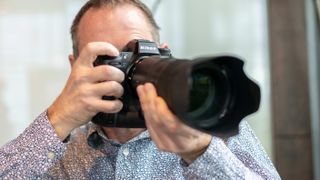
The best professional camera for yous will be dependent on what you shoot. If you lot're a style, portrait or beauty photographer you'll want a camera with a high resolution and so you lot tin crop in and print images big scale. Sports and news photographers should exist more than concerned about things similar flare-up rates and tracking capabilities while professional person landscape photographers will need a photographic camera with excellent weather sealing also as lots of megapixels.
This ways that finding the right photographic camera for you will depend entirely on what yous need out of your kit. Meanwhile, if you're a videographer (or you regularly shoot video for your work), then yous'll be looking for a whole other gear up of features, with uncropped capture, codecs and frame rates condign far more important than autofocus modes and sensor size. If you're primarily a videographer, then you lot may desire to bank check out our dedicated All-time 4K cameras for video (opens in new tab) guide, or bank check out the best cameras for vlogging (opens in new tab). Serious filmmakers may be all-time off looking at our guide to best cinema cameras (opens in new tab).
However, it'southward worth noting that, with video condign a major focus among camera manufacturers, there are some fantastic professional person cameras that offering a great option of both photo and video features at the moment. The Sony A1 (opens in new tab) features 30fps continuous shooting, a 50.1MP sensor and 8K video. Meanwhile, the upcoming Catechism EOS R3 (opens in new tab) is set to have a 30fps burst mode and the ability to control the autofocus with your eyes (yes, really!).
Plus, the medium format photographic camera (opens in new tab) marketplace is just condign more competitive. The release of the compact and relatively affordable Fujifilm GFX 100s (opens in new tab) definitely turned a few heads, making medium format a little more accessible. While yous could never call medium format cameras 'cheap', the Hasselblad 907X 50C (opens in new tab) joins the GFX 100s in featuring a more affordable toll tag. Don't worry though, there are notwithstanding plenty of centre–wateringly expensive models, including the brilliant Phase 1 XT (opens in new tab).
To assist you notice the best professional photographic camera for your purposes, we've divided this guide into six different brands. After all, when you purchase a photographic camera, you're also ownership into the entire lens ecosystem – and then, you desire to make sure that the camera has the glass you'll need.
No affair whether you've got a budget of $1,000 or $ten,000, we've gathered the best professional cameras right here.
Best professional person camera in 2022
Canon
Canon offers a large range of professional lenses and produces some of the near highly-regarded pro cameras. The best Canon cameras (opens in new tab) have traditionally been known its DSLRs, especially in professional circles, just it's shifting its attention wholesale to its new mirrorless EOS R system, and the original EOS R (opens in new tab) and beginner-orientated EOS RP (opens in new tab) were just the opening salvo – the EOS R5 is the camera that's caught our attention, and that of every other pro lensman out at that place, we doubtable.
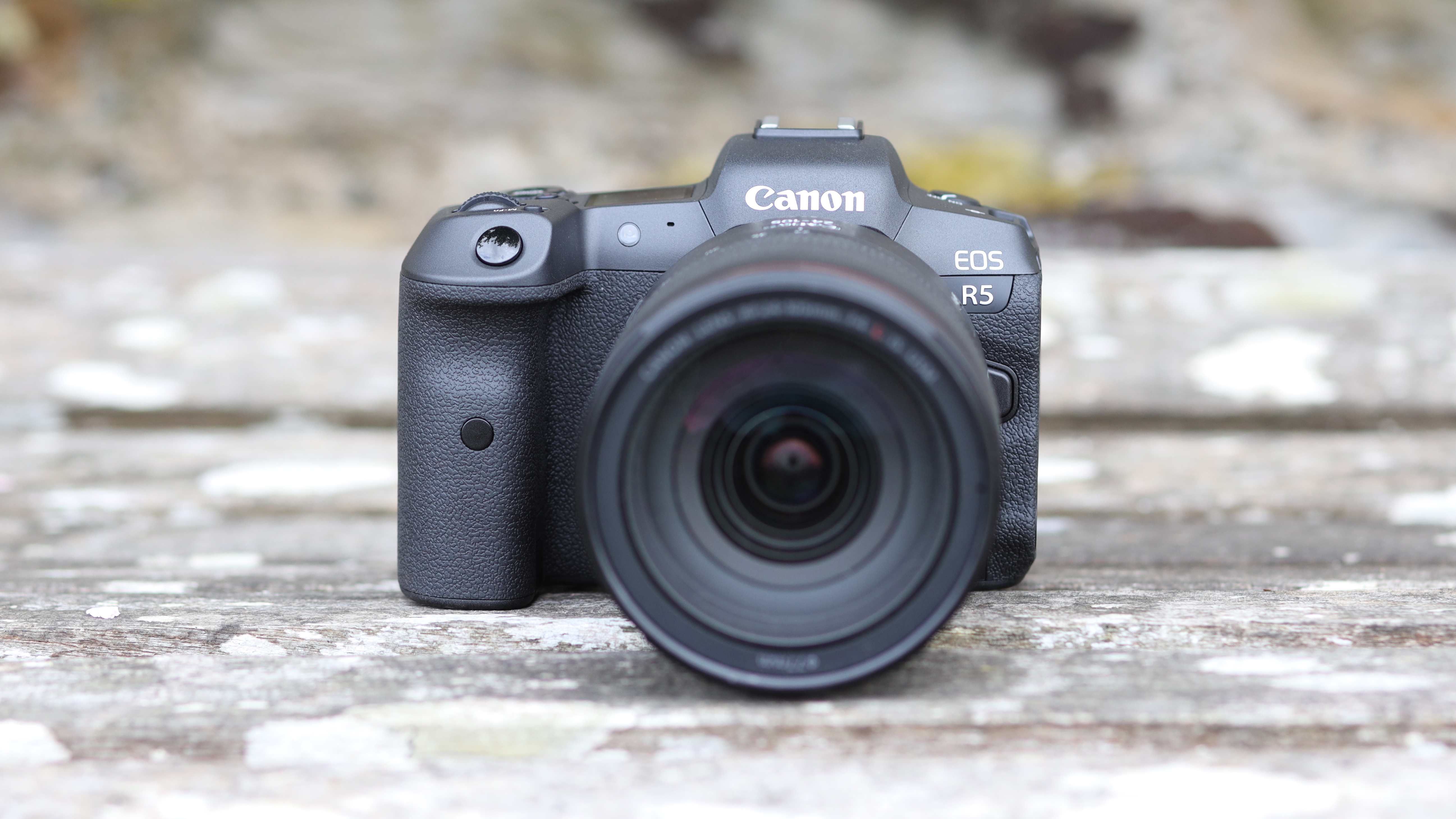
As a stills photographic camera, the Canon EOS R5 is but Canon's finest product always. It's the perfect amalgamation of the EOS R'southward form, the EOS 5D's function, and the professional-class autofocus of the EOS-1D Ten. If yous're a stills or hybrid shooter who flits between photography and videography, it'southward one of the best cameras you will ever have the pleasure of using. It has attracted some attention for the incorrect reasons, notably overheating (or the threat of it) when recording 8K video, but this shouldn't detract from this camera'southward extraordinary capabilities. It's not perfect at everything, but given its resolution, its frame rate and its video capabilities combined, this is genuinely a landmark photographic camera. What's more – and this might sound a little strange – information technology'southward taken the arrival of the much more than expensive Sony A1 to realize just how skillful the Catechism EOS R5 actually is.
Read more: Canon EOS R5 review (opens in new tab)
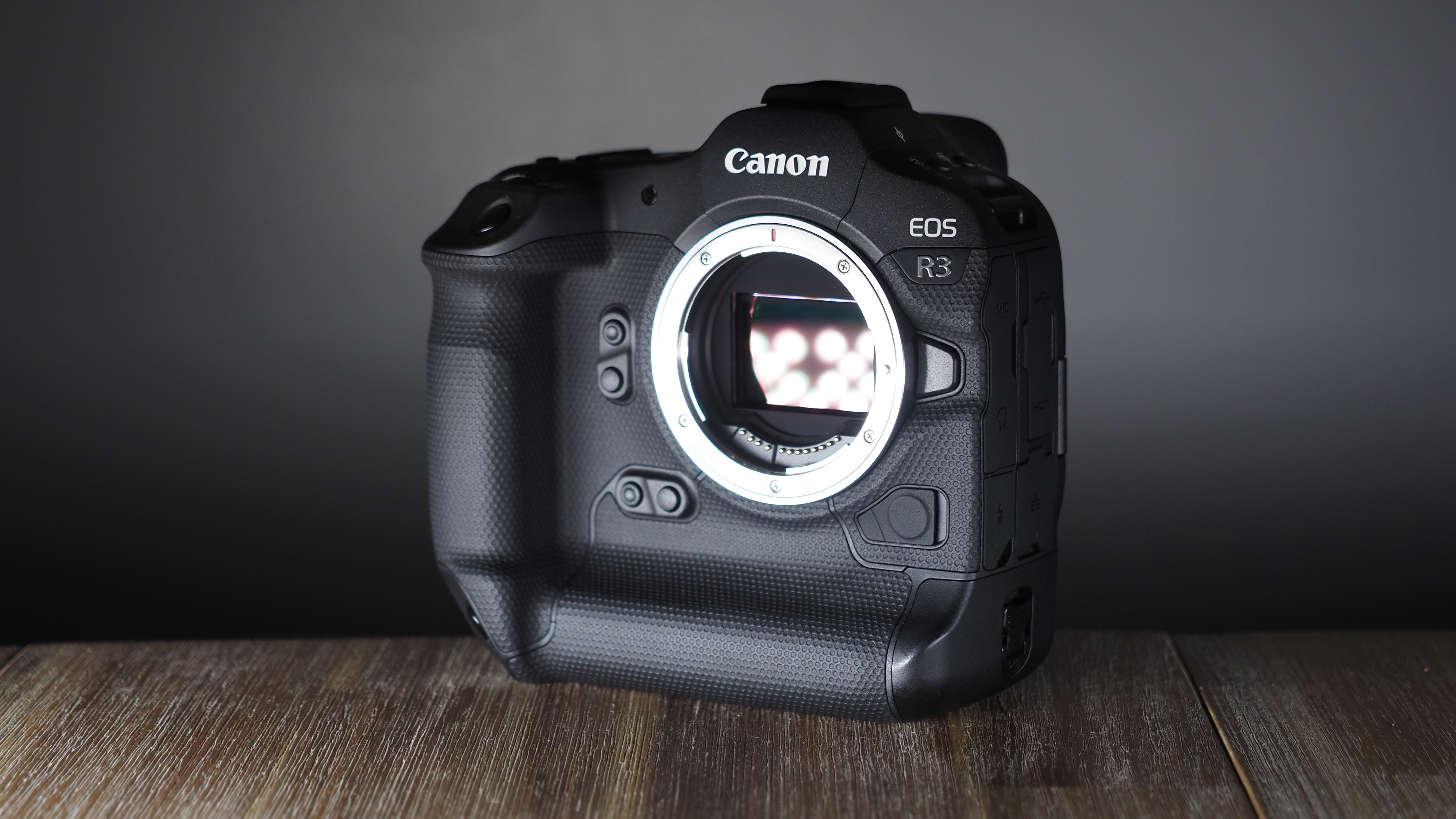
Released in September 2021, the highly anticipated Canon EOS R3 (opens in new tab)is somewhat a creature of a camera. Whether y'all shoot weddings, sports, portraits or pets, be sure to never miss a moment with blackout-free 30fps stills and impressive 6K Raw video. Despite not being released as a mirrorless alternative to the Canon EOS 1D 10 Mark III, it has such upwards-to-date engineering information technology outshines the 1D X Iii in more ways than one. It has a peerless AF system that enables you to select focus points moving your eyeball which means you never have to look away from the action. Combined with Catechism's new Deep Learning AF information technology's able to observe non only human and animal eye AF, it can track vehicles besides. It features powerful in-body stabilization, it'southward lightning-fast (then much and then you can actually boring down the shutter mechanism) and information technology's completely weather condition sealed. It switched on in only 0.4 seconds which makes it ideal for communicable a moment on the wing. Catechism actually did outdo themselves with the EOS R3 which has got us excited virtually the futurity of Canon cameras.
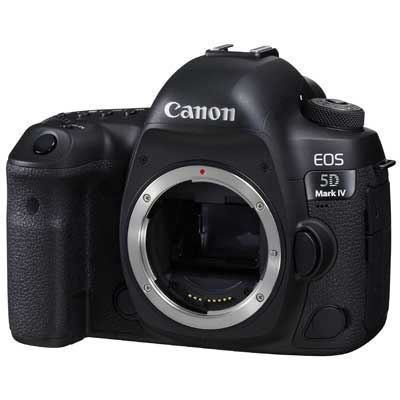
Mirrorless cameras might have taken over merely that doesn't mean at that place isn't however a place for the humble DSLR. In fact, the Catechism EOD 5D IV is still a pretty popular selection among professional photographers despite existence released in 2016. Information technology combines a reasonably high-resolution thirty.2MP sensor with decent continuous burst speeds and fast AF. Although it can shoot in 4K the file sizes are massive then you'd be better off looking at the all-time cameras for 4K video (opens in new tab) if that's something you lot're likely to use a lot. It's robust, reliable and weather resistant which is a major plus for pro photographers. Sadly, Canon has shifted nigh all its attention to its new EOS R range of mirrorless cameras then we don't know when - or even if - we will ever see a successor to the EOS 5D 4 but we can enjoy what a not bad just of kit it is anyhow.
Read more: Canon EOS 5D Marking IV review (opens in new tab)
Sony
Sony launched its full frame mirrorless photographic camera system from scratch, and although you lot can use older Blastoff lenses designed for its SLR cameras on the new A7 and A9 bodies, in practice you lot're much improve off investing in native FE mount lenses. There are at present 31 native FE lenses with more to come, so although swapping to Sony might be expensive initially, these cameras have a lot more native lens back up than other mirrorless camera brands.
See also: Best Sony cameras (opens in new tab)
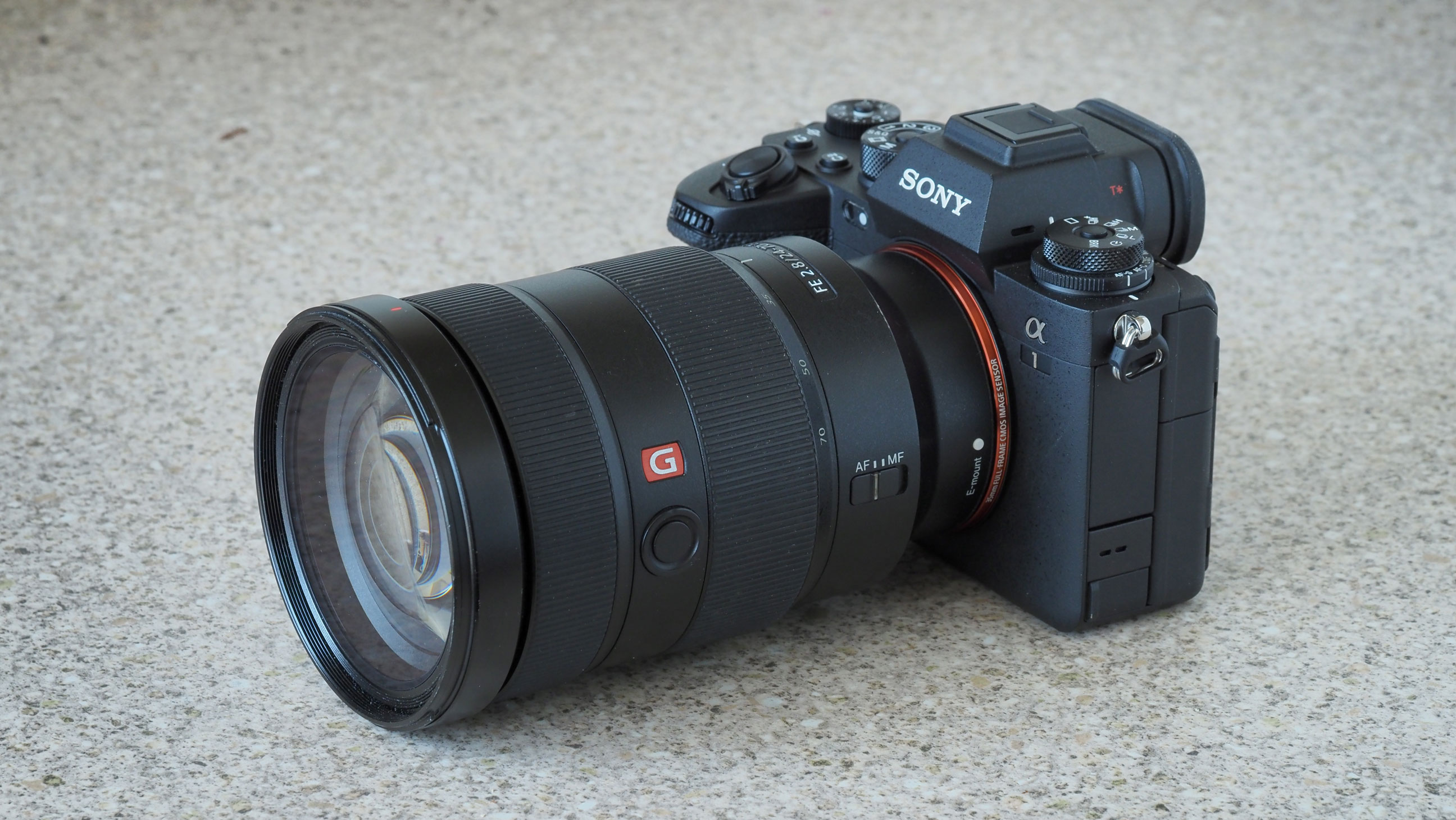
This could be the ultimate mirrorless camera. At that place is literally goose egg it can't shoot. Sports? Check, cheers to its unreal 30fps continuous shooting. Fine detail? Bank check, thank you to its 50.1MP resolution. Video? Check, thanks to its 8K recording capability (even though it's hampered by not having a fully articulating screen). The Sony A1 is far and away the nigh advanced and most powerful camera on the marketplace… notwithstanding this comes at a price, literally. It's almost twice the cost of the Sony A9 II, and it's even more expensive than the 100MP medium format Fujifilm GFX 100S. There are besides caveats on the 30fps burst, which isn't always achievable (sometimes topping out at xv-20fps, which is still impressive just less impressive than the spec sheet). Overall, though, if you want a photographic camera that can take on whatever possible assignment, this is information technology.
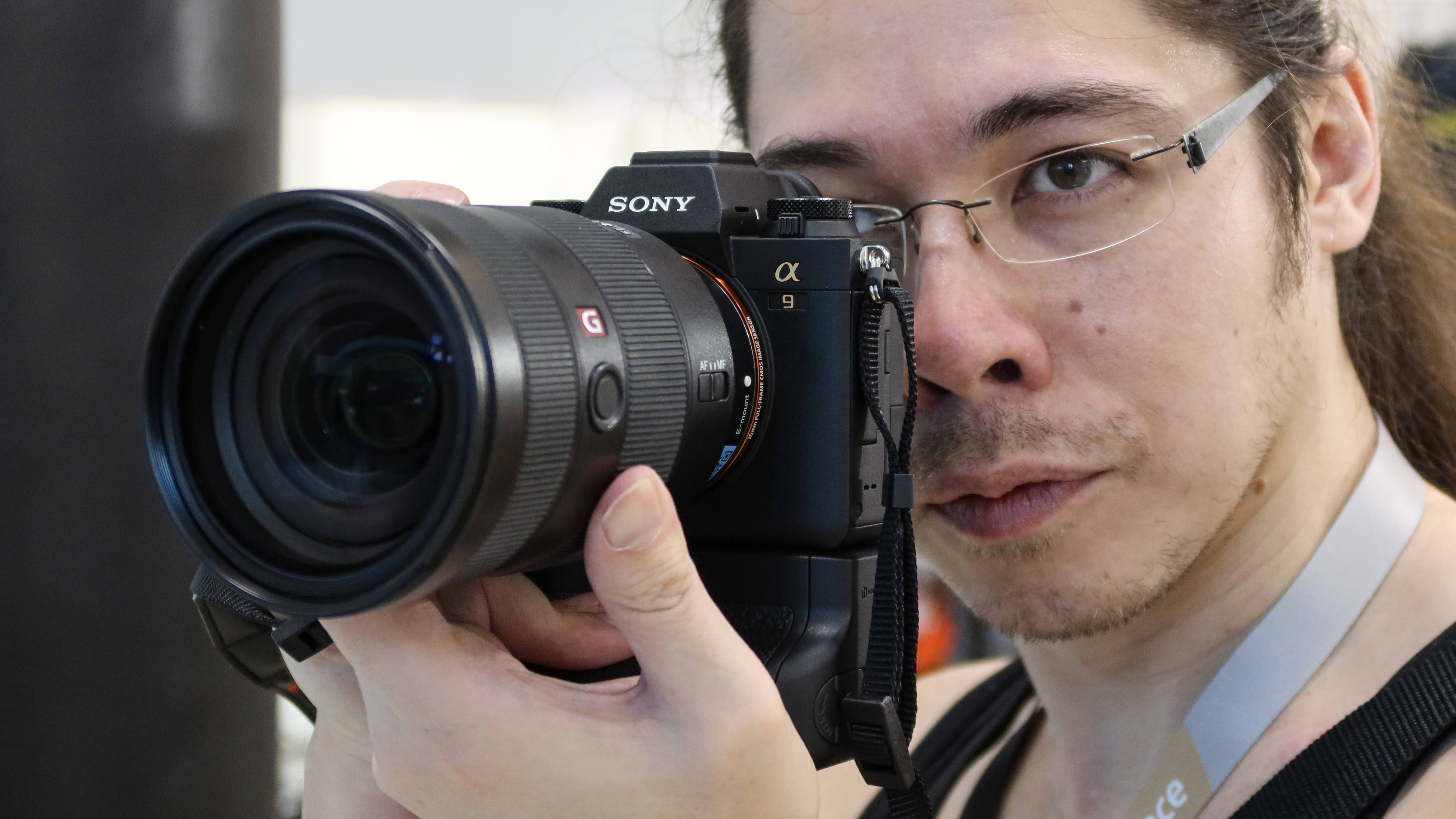
Until we got our hands on the Canon EOS 1DX Marking III, the Sony A9 II was by far the fastest total-frame sports camera we'd e'er used. The fact it's nonetheless a lot smaller than the 1DX Marking III is a big selling point plus it has a lighting fast processor and its autofocus system is extremely impressive. It features a Transfer & Tagging organisation which enables you to capture up to 50 seconds of speech and catechumen it to an prototype explanation plus the speed of prototype transfer has been massively improved which is great news for press or sports photographers who need to deliver images fast. It tin can shoot up to 20fps using the electronic shutter and 3inch, tilting, touchscreen LCD. It doesn't have the handy Pro Capture feature you would notice on Olympus cameras but considering what it does have going for it, we tin forgive that.
Read more than: Sony A9 Mark 2 review (opens in new tab)
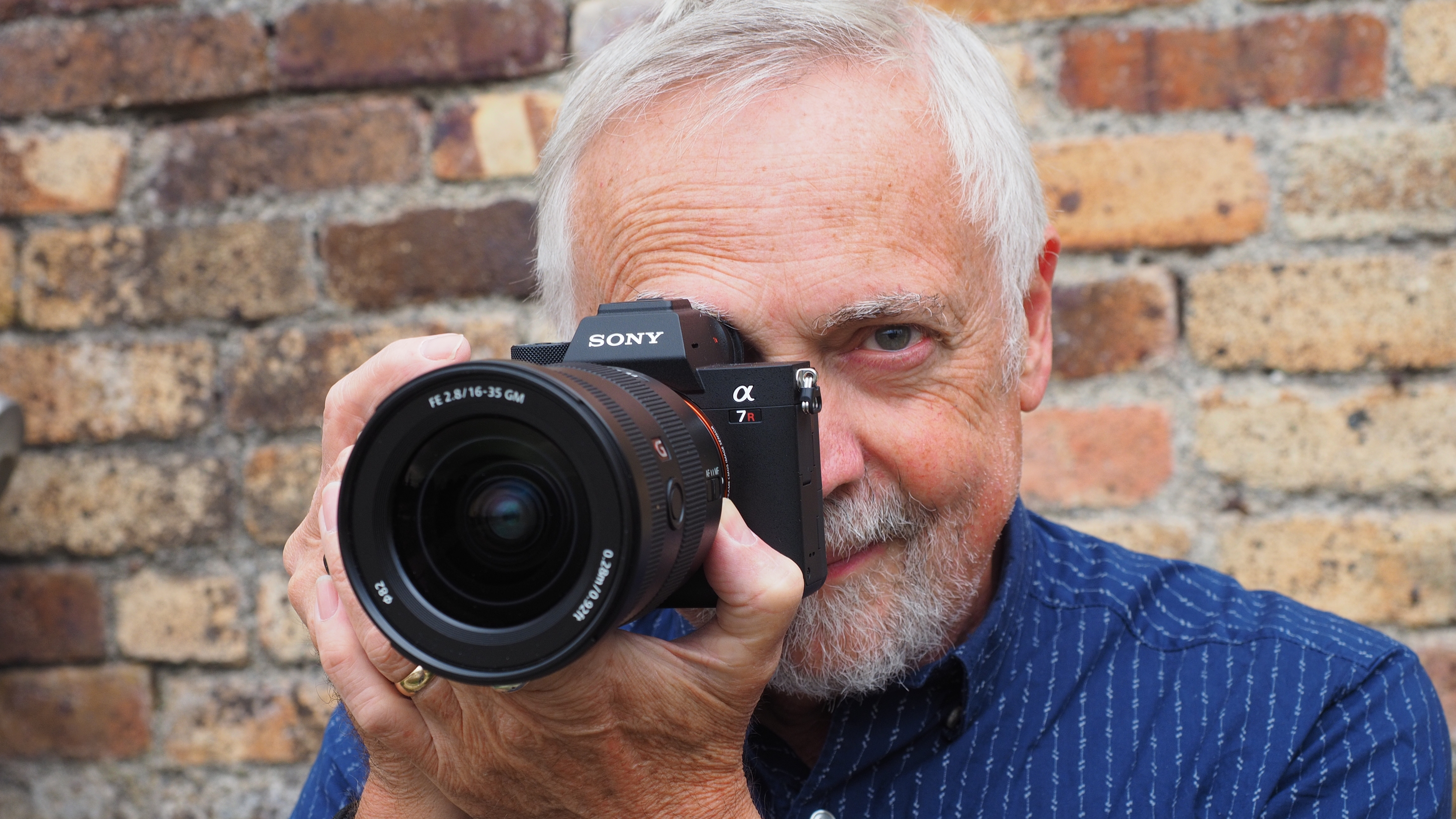
The A7R IV is Sony's new highest-resolution full-frame mirrorless photographic camera, with a record-breaking 61 million pixels and nonetheless still capable of shooting continuously at 10fps. It also has Sony's usual very expert 4K video capabilities, though still capped at 30p. The latest iteration of Sony's eye AF, yet, is stunningly effective at tracking portrait subjects, even in continuous AF. While the Sony A9 is designed for out-and-out speed and responsiveness, the A7R Mark IV is much more suitable for all-round photography at the highest quality levels. It continues the 'R' line past offering the highest resolution of any full-frame camera, but while its 10fps burst shooting looks good on newspaper for sports photography, information technology doesn't have the buffer capacity and responsiveness of the A9, then its high frame charge per unit is useful to accept, just the A7R Marking IV would not exist your outset option for sports. Nonetheless, for outright resolution, the A7R Mark IV reigns supreme, and not just in the Sony camp merely amidst full-frame cameras in general. Yous accept to switch up to medium format to beat out this, with all the costs and limitations that become with it. Not even the new Sony A1 (opens in new tab), at twice the price, can friction match this resolution.
Read more than: Sony A7R IV review (opens in new tab)
Nikon
Like Canon, Nikon also offers a huge range of professional person lenses, and a choice of pro photographic camera bodies. Nikon has as well taken its first steps in the total-frame mirrorless market with the Nikon Z6 and Z7 and, as with the Catechism EOS R, these cameras can use existing electric current Nikon DSLR lenses, without brake, via an adaptor, then Nikon users can try a 'sidegrade' to mirrorless a step at a time rather than having to swap out a whole system.
Come across also: Best Nikon cameras (opens in new tab)
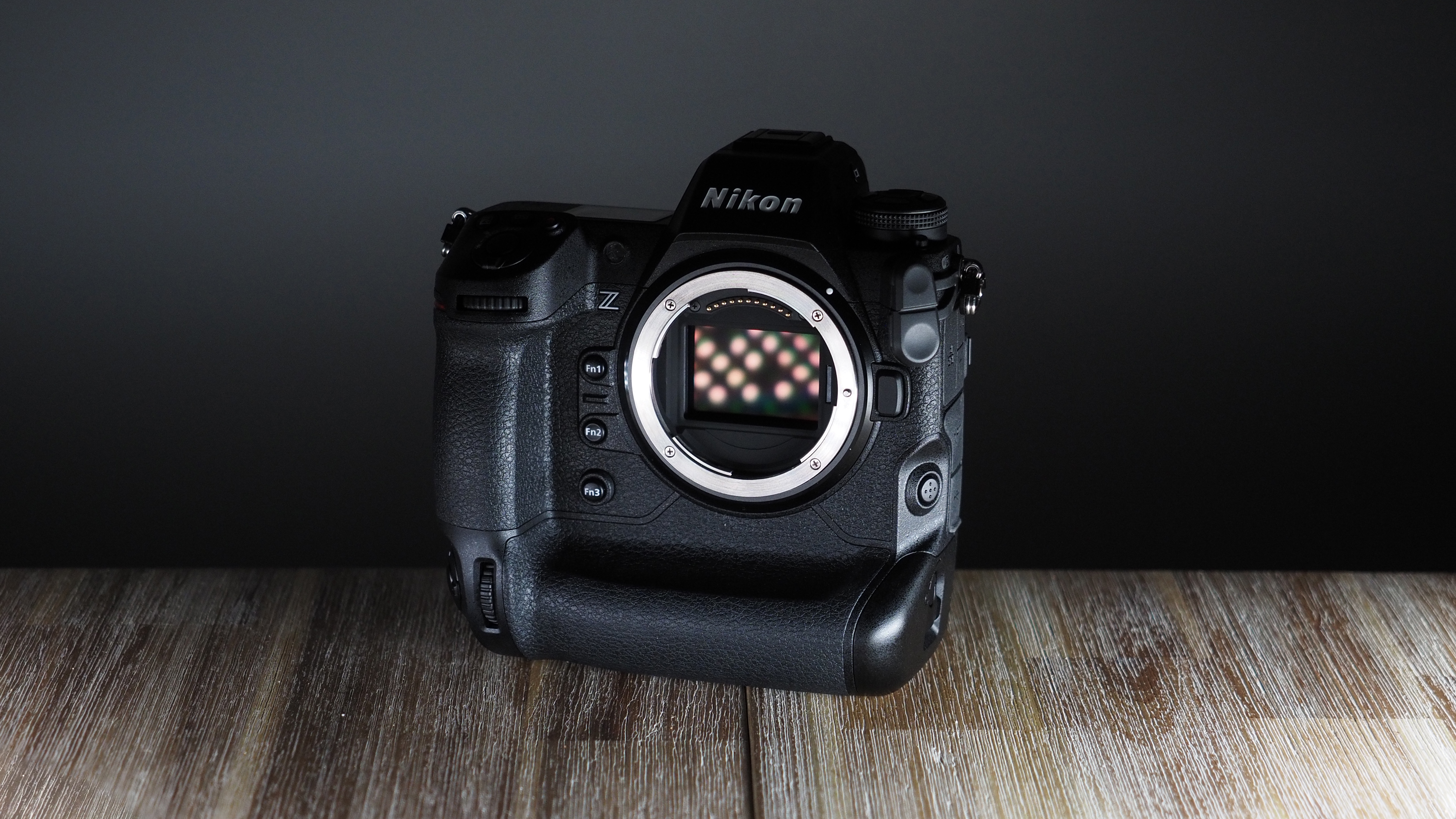
Nikon might've been late to the game in launching its professional, meridian-spec mirrorless but the Nikon Z9 was definitely worth the wait. It's an absolute beast of a photographic camera when information technology comes to video, knocking the Canon EOS R3 (opens in new tab) out of the park. It's capable of 8K 60p video recording or 8K 30p with an enormous two-hour tape limit. Nikon decided to remove the mechanical shutter completely which means the Z9 is capable of 120fps continuous shooting and has a max shutter speed of 1/32,000 which makes it perfect for sport and bird photography. The Z9 is powered by Deep Learning AF (opens in new tab) which makes the photographic camera capable of nine kinds of recognition: human eyes, faces, heads and upper bodied; fauna eyes, heads and bodies; and cars, planes, trains and motorbike. It has the same 493 AF points as the Nikon Z7 Ii which seems impressive until you observe out that the Canon EOS R3 has a whopping 4,779 AF points. The Z9 comes in quite a bit cheaper than both the Sony A1 and the Canon EOS R3 and it has a lot of advanced features.
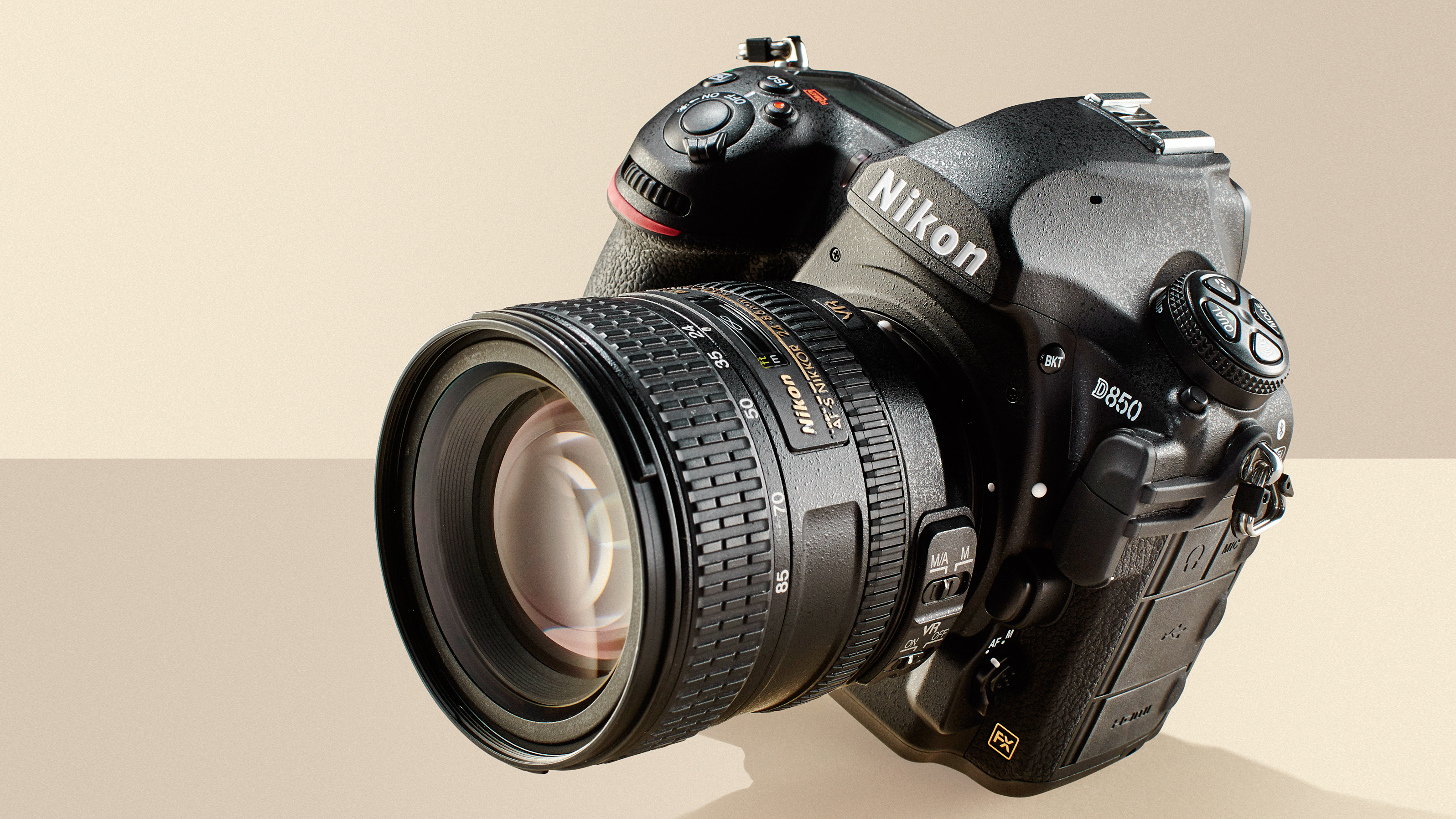
Where the Nikon D6 is congenital for sheer speed, durability and responsiveness, the D850 is built for resolution – though information technology can still capture images at 7fps, or 9fps with the optional battery grip. Some may say the D850 is the high-point of DSLR resolution and perhaps that last smashing DSLR release, but information technology does not feel like a dinosaur. Its large, chunky torso feels good in the hand and bully with bigger lenses, and while its alive view AF may exist sluggish, it's a very powerful, modern-feeling camera – a superb all-rounder that actually feels equally tough, rugged, fresh and exciting now every bit when information technology was launched back in 2017. Whenever I was shooting manner or editorial, the Nikon D850 was my go-to camera due to how easy information technology was to navigate and alter settings and how cute the images came out.
Read more: Nikon D850 review (opens in new tab)
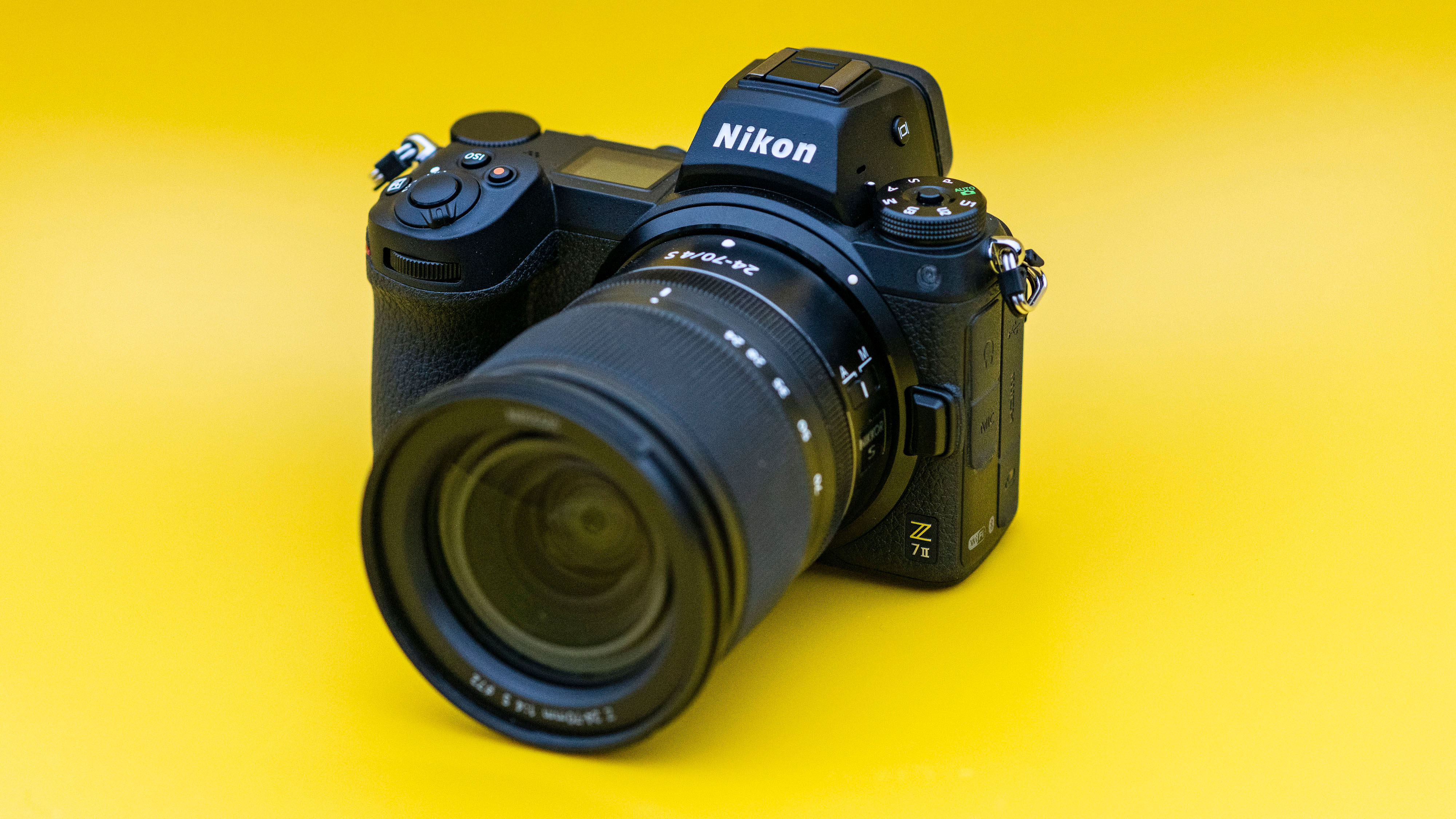
The Z7 II is Nikon's flagship total-frame mirrorless camera and an updated version of the original Z7. All the changes that we've seen on the Z7 Ii compared to the original Z7 are certainly welcome, especially the additional card slot and dual processors. That beingness said, we can't help feeling Nikon accept played it a bit safe. Information technology doesn't really rival the impressive Canon EOS R5 or the Sony A7R IV, it only builds on the original Z7. It's all the same a vivid camera and although it doesn't accept every bit many standout features, it is capable of shooting in 12-bit 4K Apple tree ProRes raw when using an external monitor such as the Atmos Ninja V (although you lot practise have to pay for the upgrade).
Read more: Nikon Z7 II review (opens in new tab)
Fujifilm
Fujifilm has two carve up lines of professional cameras - its APS-C X series and its medium format GFX series. The flagship X-T4 is the latest offering in the 10 range and ane of the cheapest cameras on our pro list but its an incredible camera for both video and stills. With the GFX range, Fujifilm has done something not many other photographic camera brands have managed - its made medium format photography affordable. The launch of the GFX 100s was an exciting moment for Fujifilm and Fujifilm fans who wanted the high resolution of the GFX 100 but in a smaller torso and at almost one-half the cost. Nosotros were then blown away by information technology in fact, we had to requite information technology five stars in our review.
• Read more: Fujifilm GFX 100s vs GFX 100 (opens in new tab)
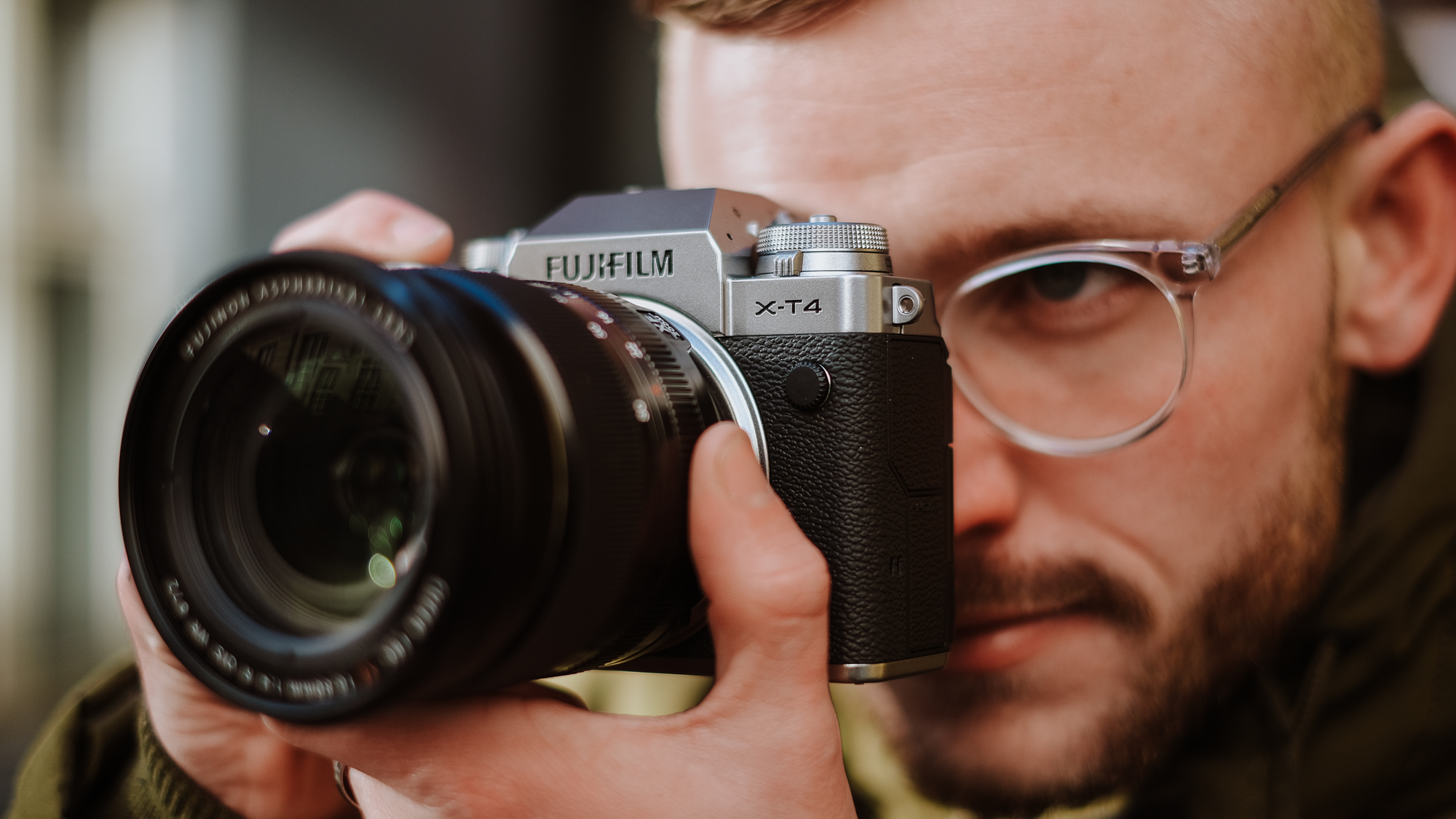
Some might argue the Fujifilm X-T4 isn't a pro photographic camera but in our optics, information technology certainly is. It combines fast autofocus, impressive video capabilities and a loftier-quality electronic viewfinder - plus its super convenient with all of its external dials. When the X-T3 was launched in 2018 it was incredibly well-received but lacked certain features such as in-body stabilization and a fully articulated screen. The X-T4 includes these features making it ane of the best APS-C mirrorless cameras effectually. Information technology still has the same sophisticated 26.1MP X-Trans sensor and the ability to shoot 4K merely with an improved shutter and a new battery that lasts longer, Fujifilm has truly refined an already splendid product.
Read more: Fujifilm X-T4 review (opens in new tab)
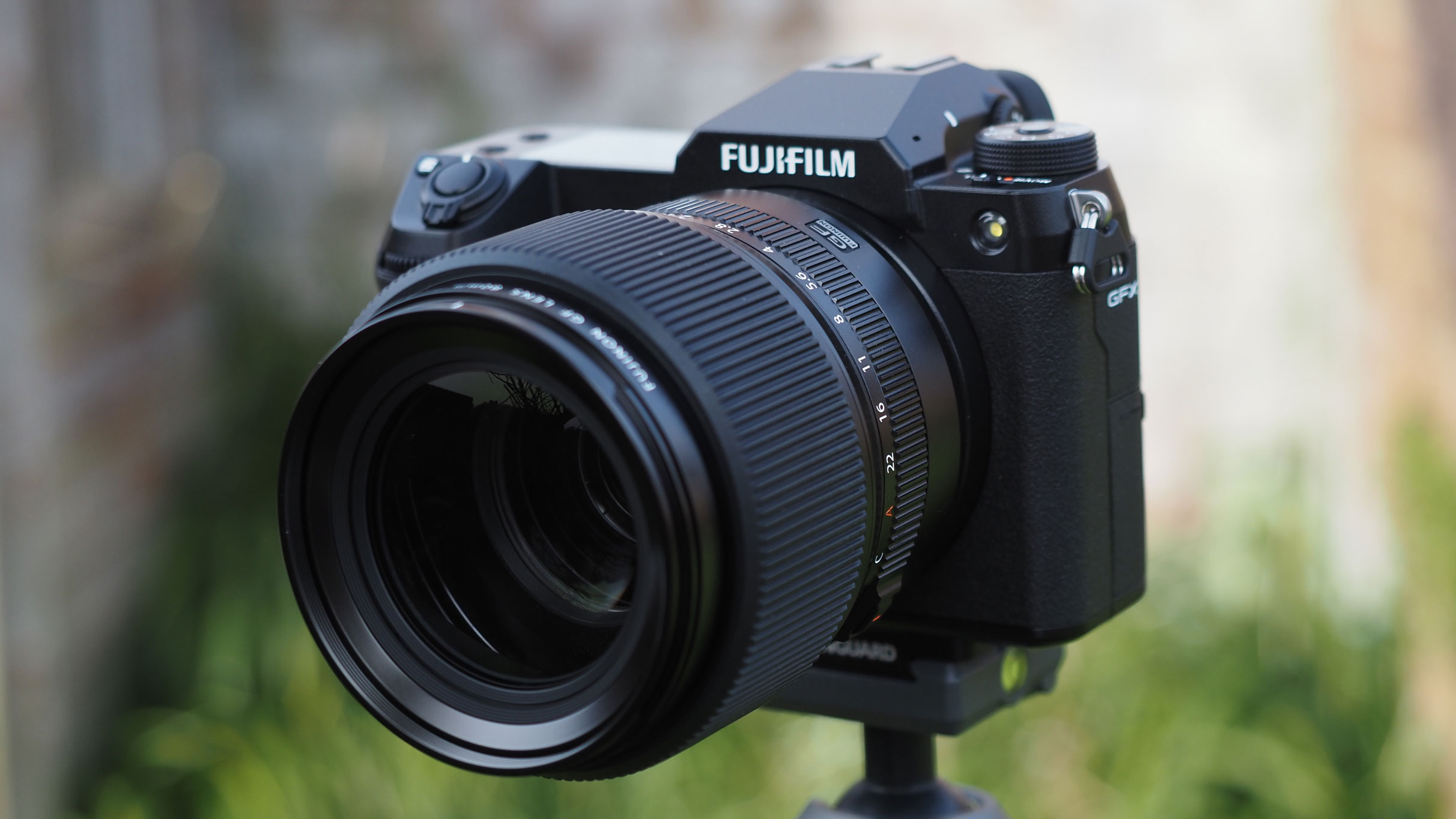
Want the ultimate resolution in a body so small and steady that you can use it for street photography? Meet the Fujifilm GFX 100S, a marvel of photographic achievement that packs a 100MP medium format sensor into a body nearly the size of a bulky DSLR that even possesses in-torso paradigm stabilization – which, despite having to stabilize a gigantic medium format sensor, is actually on par with the IBIS systems on Sony'due south smaller full-frame sensors. While information technology lacks the vertical grip of the $10,000 Fujifilm GFX 100 (opens in new tab), it'due south otherwise the aforementioned tech and same capabilities squeezed into a much smaller and much cheaper body – though Fujifilm's medium format lenses mean that this is still far from a compact system. The prototype quality is simply spectacular; for ultimate stills shooting, this is almost unbeatable. It even shoots an incredibly respectable 4K 30p video, too!
Read more: Fujifilm GFX 100S review (opens in new tab)
Read more: Fujifilm GFX 100S vs Fujifilm GFX 100
Panasonic
Panasonic's range is now split betwixt its existing Micro Four Thirds cameras with smaller sensors but legendary 4K video capabilities, and its new total frame mirrorless Lumix South models – and with no upgrade path at all between these systems. There are an increasing number of native Lumix South lenses right now, thanks to the Fifty-Mount Alliance and the work of other lens makers like Sigma and Leica. The Lumix Due south system is developing fast but will require heavy investment in an all-new system.
See also: Best Panasonic cameras (opens in new tab)
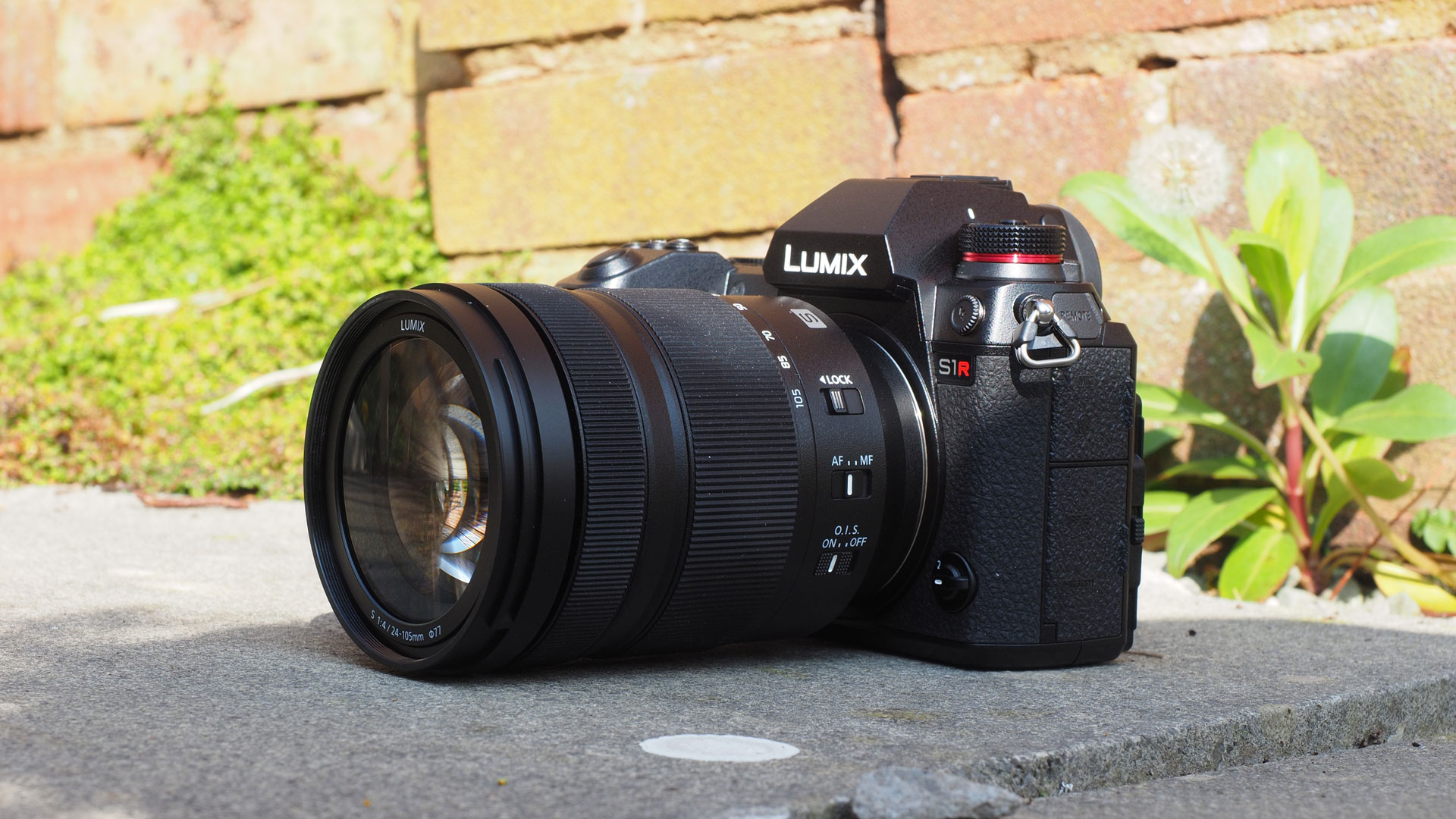
The new Lumix Southward range is a very interesting suggestion for professional photographers, especially at present that the range of L-mount lenses available is now quite good, and growing fast. The Lumix S1R is the well-nigh enticing proposition for pros, combining 4K video capture with a high-speed 6K photo mode and huge 47.3MP resolution. The 5.76-million dot electronic viewfinder is astonishing, and the S1R handles very well also. The 24MP Lumix S1 (opens in new tab) is cheaper and a little improve at video, but that's a cost determination – if you lot're actually serious nigh video, the pricier Lumix S1H (opens in new tab) is the one to go for.
Read more: Panasonic Lumix S1R review (opens in new tab)
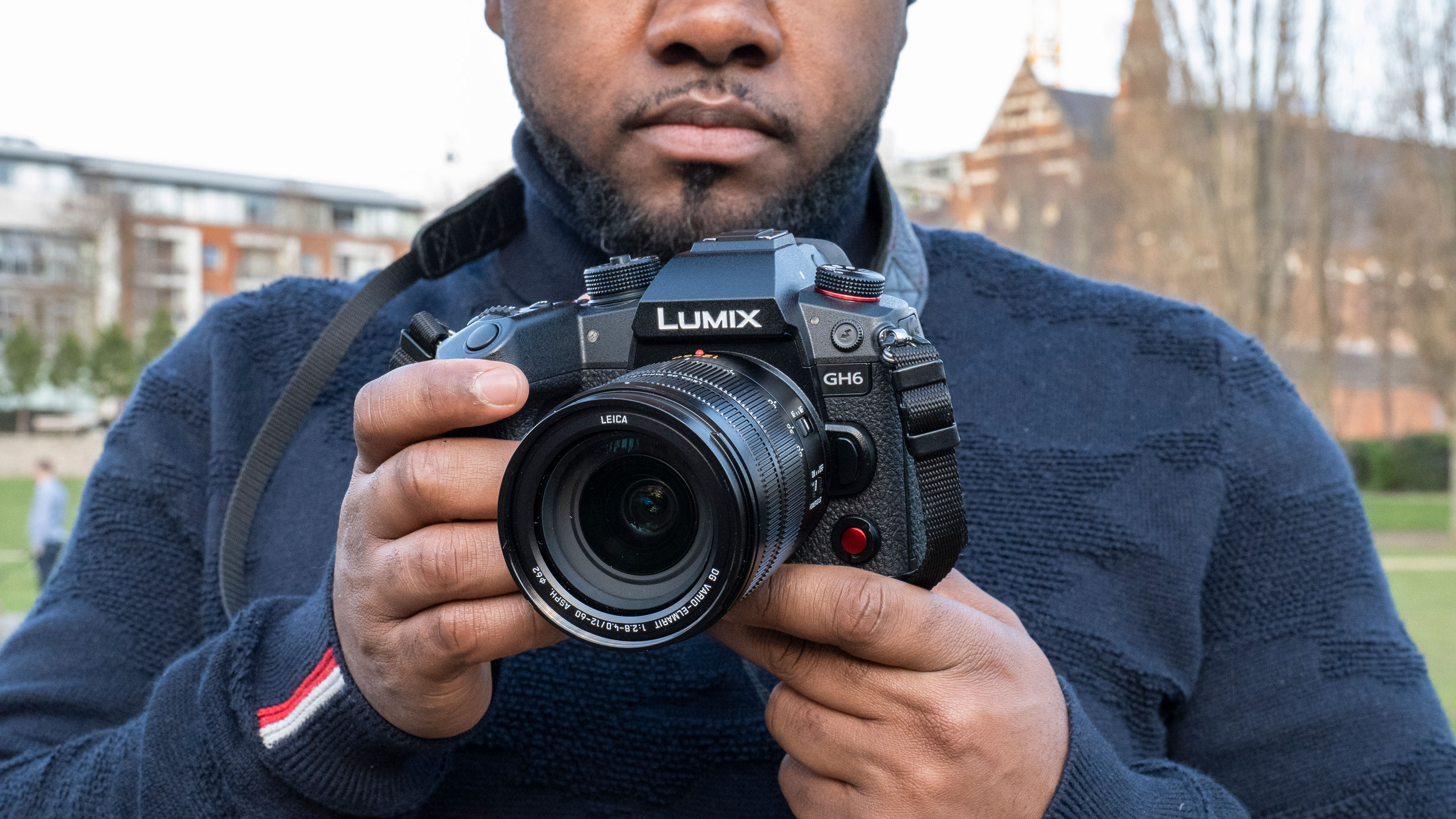
Skilful things come to those who wait is the phrase that comes to heed when I think of the Panasonic GH6. Information technology had pretty big boots to fill post-obit the popular Panasonic GH5 (opens in new tab)which even so is regarded every bit 1 of the best value options for shooting video. Nonetheless, the GH6 is an comeback in only well-nigh every way. Information technology has a brand new 25.2MP sensor, it can shoot 4K at 120p or a staggering 5.7K at 60p. At that place was hope it would be able to shoot in-camera RAW thanks to the brand new stacked MFT sensor and CFExpress Type B storage just sadly it'due south not the example.
For those looking to shoot stills, Panasonic decided to stick with its DFD (Depth From Defocus) contrast AF arrangement which is super fast and effective. From what we've shortly so far, the image quality is very good, it can shoot upwards to 75fps in burse mode (when using the electronic shutter and AFS) although this is reduced to 8fps when shooting with continuous AF. The trunk is very large for a Micro Iv Thirds photographic camera - it'south even bigger than some of the Sony A7 bodies however, the lenses are notwithstanding much more than compact and there's loads to choose from. All in all, the GH6 is incredibly impressive and while the starting cost point is pretty loftier but it's all the same cheaper than the Sony A7S Iii and it has five.7K capture and 25MP stills.
Read more: Panasonic GH6 review (opens in new tab)
Olympus
Compared to the spectacular developments from other camera makers, Olympus has had a pretty quiet time of information technology. It'south soldiered on with its relatively modest Micro Four Thirds format in a maelstrom of medium format bombshells and armies of total frame mirrorless cameras. In this environment, a 20MP Micro Four Thirds sensor seems hopelessly outgunned. And still it isn't. The MFT format'southward size brings substantial toll and weight advantages that its fans will exist only too pleased to tell you well-nigh.
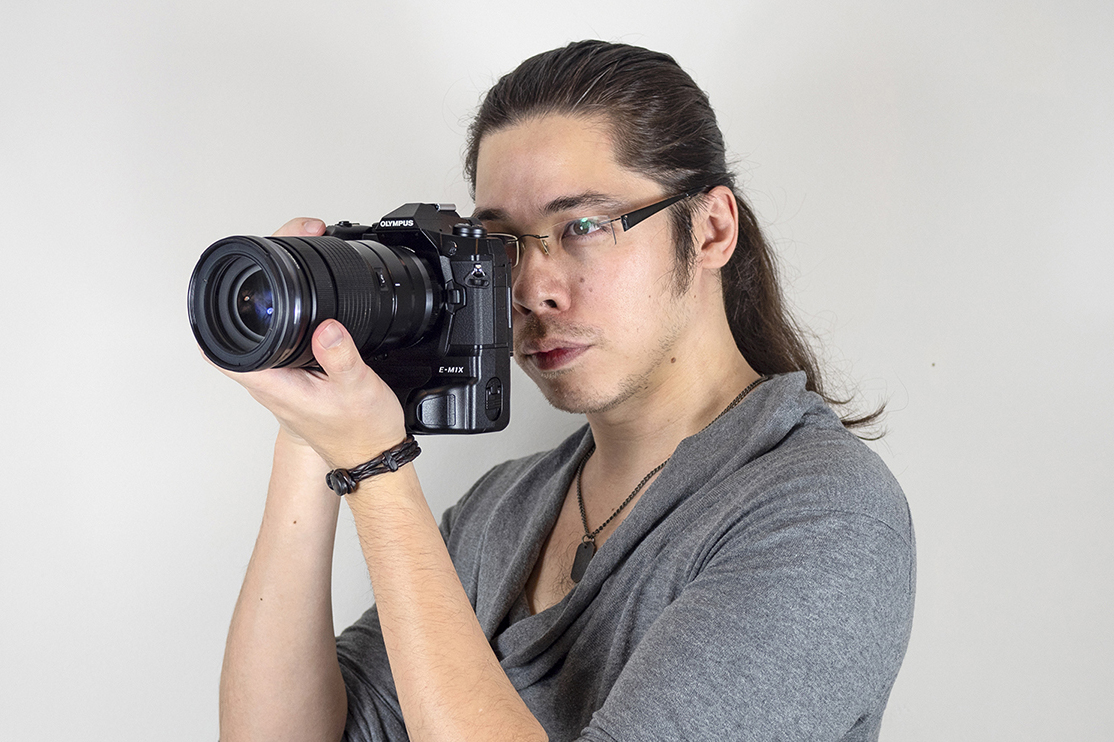
Olympus raised a few eyebrows when it launched the OM-D E-M1X, a big new professional photographic camera aimed squarely at the sports market, only with what looked like very similar specs to the existing E-M1. But dig deeper and you find the E-M1X is a very unlike fauna, with an integrated grip for bigger battery capacity and duplicated horizontal/vertical shooting controls and a dual processing system that dramatically ups the game for autofocus tracking, with a new AI system for recognising and tracking subjects. What many won't realise, likewise, is that Olympus has an extremely compelling pro lens line-up, especially for telephoto lenses, and while the Olympus MFT sensor is smaller than the total frame sensors used by Canon, Nikon and Sony pro cameras, it will toll a lot less to build a full professional system – and it will be a lot lighter to carry effectually. If 20MP is plenty (it is for EOS-1D Ten Mark III and Nikon D6 devotees!), then the E-M1X is a very powerful professional person proposition indeed. It'due south undermined slightly by the E-M1 Marking Iii, which borrows some of its tech, but the East-MX's big, mesomorphic body gives information technology a serious handling advantage, peculiarly with bigger lenses.
Read more: Olympus OM-D E-M1X review (opens in new tab)
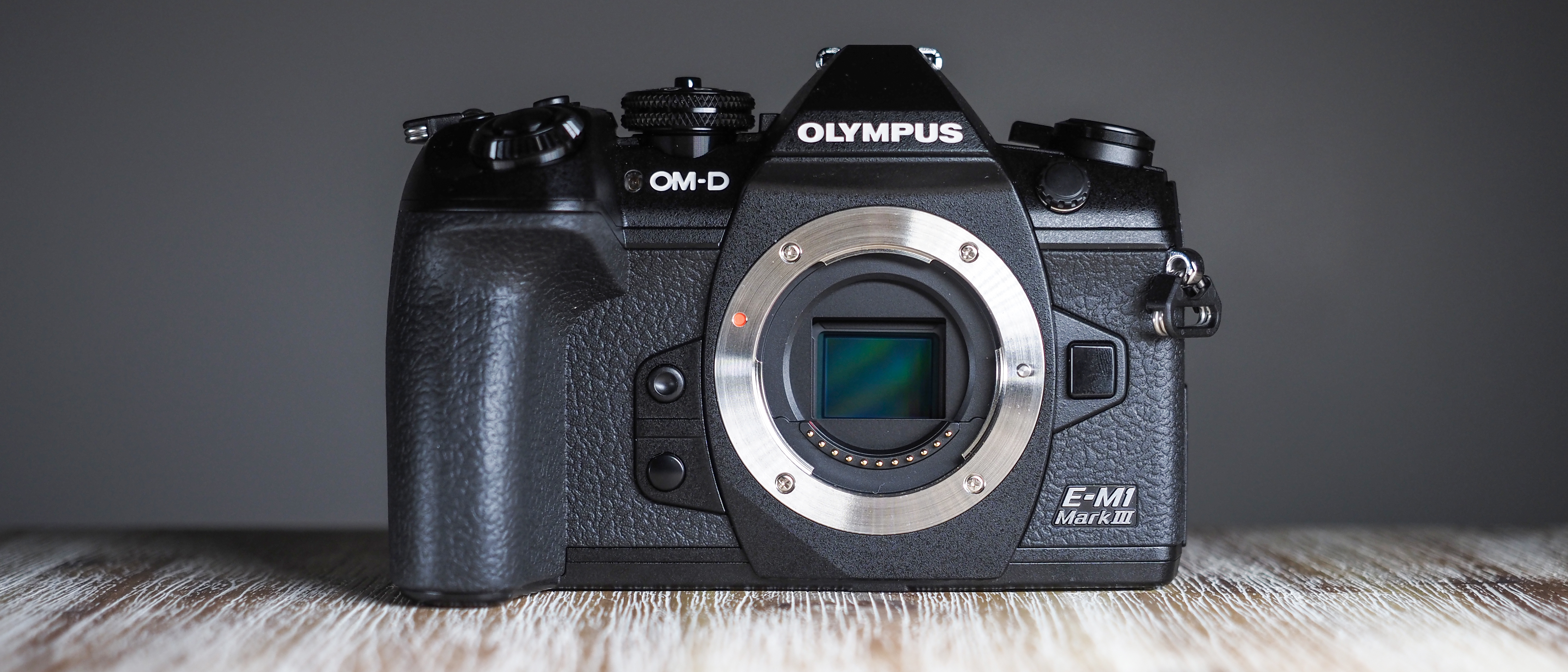
It's unlikely Olympus will e'er fully overcome resistance to its smaller Micro Four Thirds sensor format, which is one quarter the size of those in its full frame rivals, but that's a pity because this system has a lot to offering. The Olympus OM-D E-M1 Mark III is actually a very constructive all-circular professional person camera for general photography. When shooting sport, its autofocus and frame rate are a adept match for more expensive full frame rivals and its Pro Capture mode (up to 60fps) is just jaw-dropping. When loftier resolution is essential, its 50MP and 80MP options can foursquare up against many medium format cameras, admittedly with static subjects not moving ones. And when shooting absolutely anything, its 7.5 stops of image stabilization outperform every camera on the market.
Read more:
• Olympus OM-D E-M1 Mark Three review (opens in new tab)
How to cull a pro system
Picking the best professional person camera is non just about picking the one with the best or nigh enticing specifications. You accept to await at the organisation every bit a whole, its lenses, its other models, and what is set up to be released in its future. Earlier making a pick, it's worth request yourself a series of questions:
ane) Are you switching from a dissimilar arrangement? If this is the instance, it'south well worth looking into whether at that place's whatsoever potential for compatibility between your existing and new organisation (i.e. using lens mount adapters). 'Migrating' an existing system is much simpler and cheaper than starting once again with a whole new setup.
two) What lenses will you lot demand? Recollect nigh the kind of work y'all need and the lenses you need for it, and check whether the system you're considering can see those needs. Lens guides can be useful here, such every bit our guides to the best Canon lenses (opens in new tab) or all-time Nikon lenses (opens in new tab).
3) DSLR or mirrorless? While it does sometimes feel like mirrorless is taking over the world, the best DSLR cameras do still have their advantages and some, similar the Canon EOS-1D X Marking III, are breaking new basis. Read our guide to DSLR vs mirrorless cameras if you're yet not sure.
4) Video vs stills? Are you shooting video likewise as stills? While both DSLRs and mirrorless cameras can and practise produce fantabulous video, mirrorless currently has the edge here, so if video is part of your portfolio then it'southward worth factoring this into consideration.
How we test cameras
We exam cameras both in real-earth shooting scenarios and in carefully controlled lab conditions. Our lab tests mensurate resolution, dynamic range and point to noise ratio. Resolution is measured using ISO resolution charts, dynamic range is measured using DxO Analyzer examination equipment and DxO Analyzer is also used for dissonance analysis beyond the camera's ISO range. We use both existent-world testing and lab results to inform our comments in buying guides.
More buying guides:
• Best Fujifilm cameras (opens in new tab)
• Best mirrorless camera (opens in new tab)
• Best medium format camera (opens in new tab)
• Cheapest full frame cameras (opens in new tab)
• Best cameras for vlogging (opens in new tab)
• The best 4K camera for filmmaking (opens in new tab)
Related manufactures
Source: https://www.digitalcameraworld.com/uk/buying-guides/the-best-cameras-for-professionals
Posted by: walkergeop1953.blogspot.com


0 Response to "How Much Do Professional Cameras Cost"
Post a Comment